Sarath’s Thrillophilia Review of a Solo Escape to Meghalaya

I never thought I'd be the kind of person to take a solo trip. As a central government employee in Chennai, my life revolved around structured routines, familiar places, and the comforting chaos of city life. But something inside me longed for a break - a pause from the monotony, a chance to breathe in air untouched by pollution and to listen to something other than the relentless honking of traffic. That is how Meghalaya happened.
It was not an impulsive decision, but rather a long-overdue one. The very idea of being alone, surrounded by the rolling hills, cascading waterfalls, and endless greenery of the northeast thrilled me. And so, on one beautiful morning, I found myself at Guwahati Airport, ready to embrace the unknown.
Shillong is the Scotland of the East
The drive from Guwahati to Shillong was nothing short of magical. As the cityscape gave way to winding roads lined with tall pine trees, I could feel my excitement rising. The first stop was Umiam Lake, also known as Borapani. As I stood at the edge of the vast lake and watched the reflection of the sky shimmer on its surface, a thought struck me that this was just the beginning.
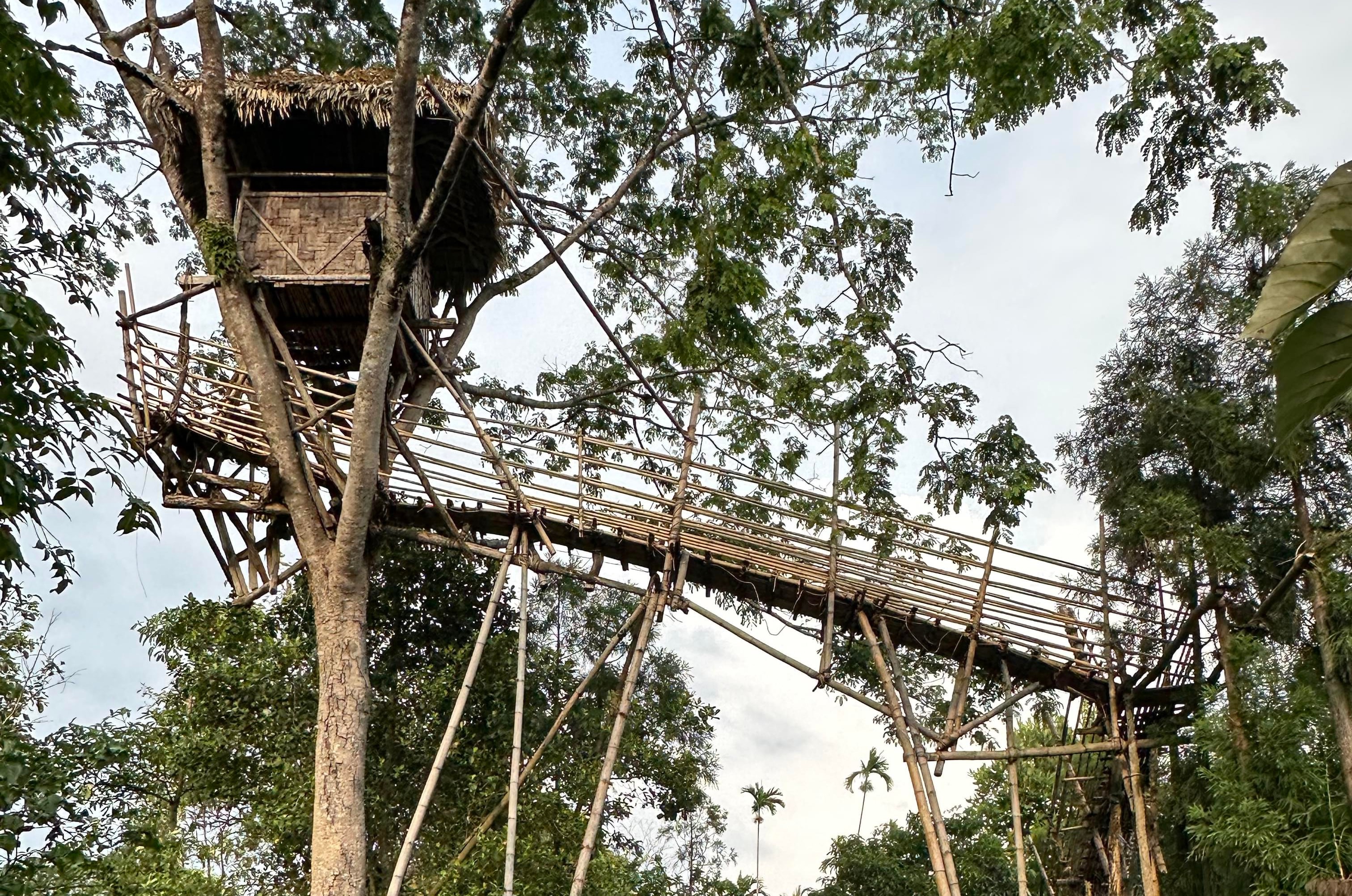
Upon reaching Shillong, I checked into my hotel and decided to explore the local markets. The streets were alive with colours, and the aroma of freshly fried momos filled the air. As I strolled through the Police Bazaar, I realised something - solitude was not loneliness. It was freedom. I could take my time, soak in the sights, and experience everything at my own pace.
A Date with the Rain and Waterfalls
The next morning, I set off for Cherrapunjee, the land of perpetual rain. My first stop was Elephant Falls, where the cascading water crashed down with an unrelenting force. I let the mist settle on my face and felt an exhilarating chill.
As the journey continued, the Mawkdok Dympep Viewpoint took my breath away. The valley stretched out endlessly as its slopes were covered in an emerald carpet. I stood there, hands in my pockets, watching the clouds kiss the hills. It felt like standing on the edge of the world.
Then came Wei Sawdong Falls. Although the hike down was steep, the sight that greeted me at the bottom was worth every step. The three-tiered waterfall looked like a scene from a fantasy novel, with its turquoise waters glistening under the sunlight.
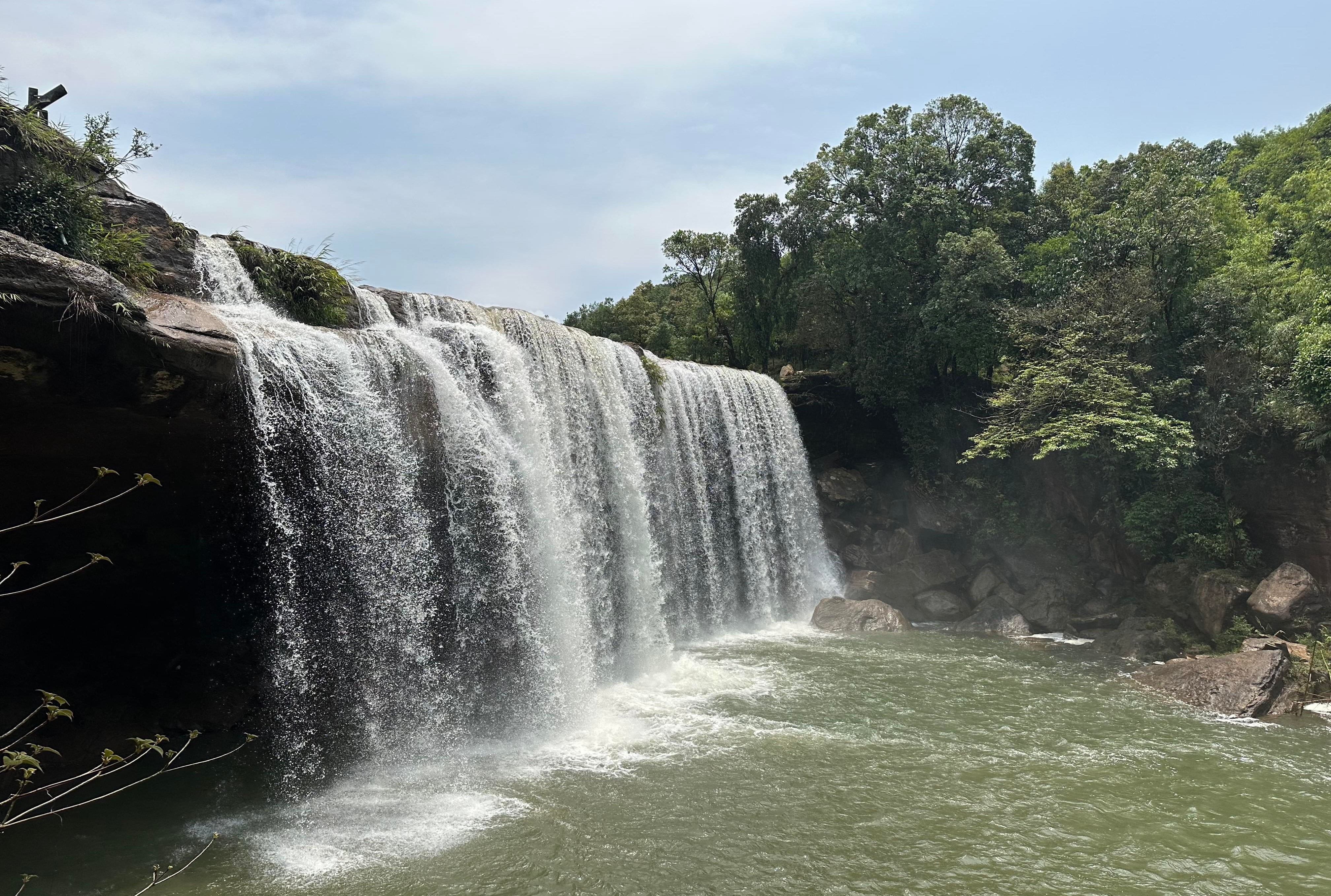
The day ended with a visit to Nohkalikai Falls, the tallest plunge waterfall in India. As I stood there and listened to the legend of a heartbroken mother whose sorrow gave the falls its name, I felt the weight of the stories hidden in these landscapes.
The Trek to the Living Root Bridge
On the third day, I went on the much-anticipated trek to the Double Decker Living Root Bridge in Nongriat. The descent from Tyrna village was challenging - 3,500 steps leading down into a thick forest. But with each step, I was rewarded with glimpses of crystal-clear streams, hanging bridges, and the constant chirping of unseen birds.
Upon reaching the bridge, I was in complete awe. This was no ordinary bridge - it was alive. Made from the intertwining roots of ancient rubber trees, it had stood the test of time, shaped by both nature and the Khasi people. I dipped my feet into the cool water beneath and let exhaustion melt away.
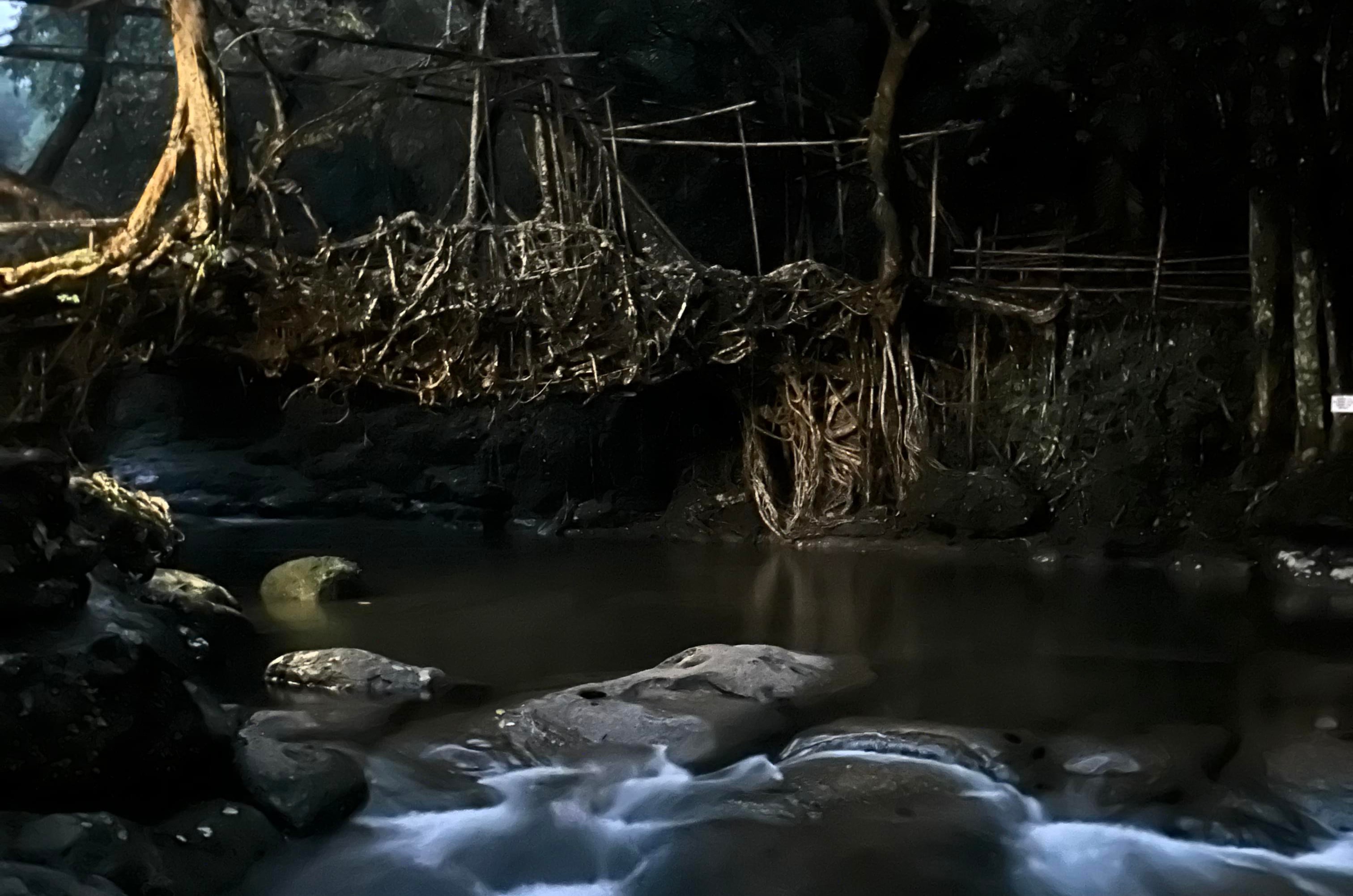
On my way back, I met a local villager who shared stories of the Khasi traditions. “Nature is our companion,” he said, smiling. “We respect it, and it takes care of us.” His words stayed with me as I climbed back up, with each step a little lighter than before.
Dawki and the Glass River
The next day, I went to Dawki, which is home to the famous Umngot River. I had seen pictures of its crystal-clear waters, but seeing it in person was something else entirely. The boat seemed to float on air and the water was so transparent that I could see pebbles at the riverbed.
As the boatman rowed, I let my fingers trail through the cool water. The silence was soothing, broken only by the gentle splashing of the oars. For the first time in a long while, my mind was quiet. No deadlines, no responsibilities - just the rhythmic movement of the boat and the endless expanse of blue.
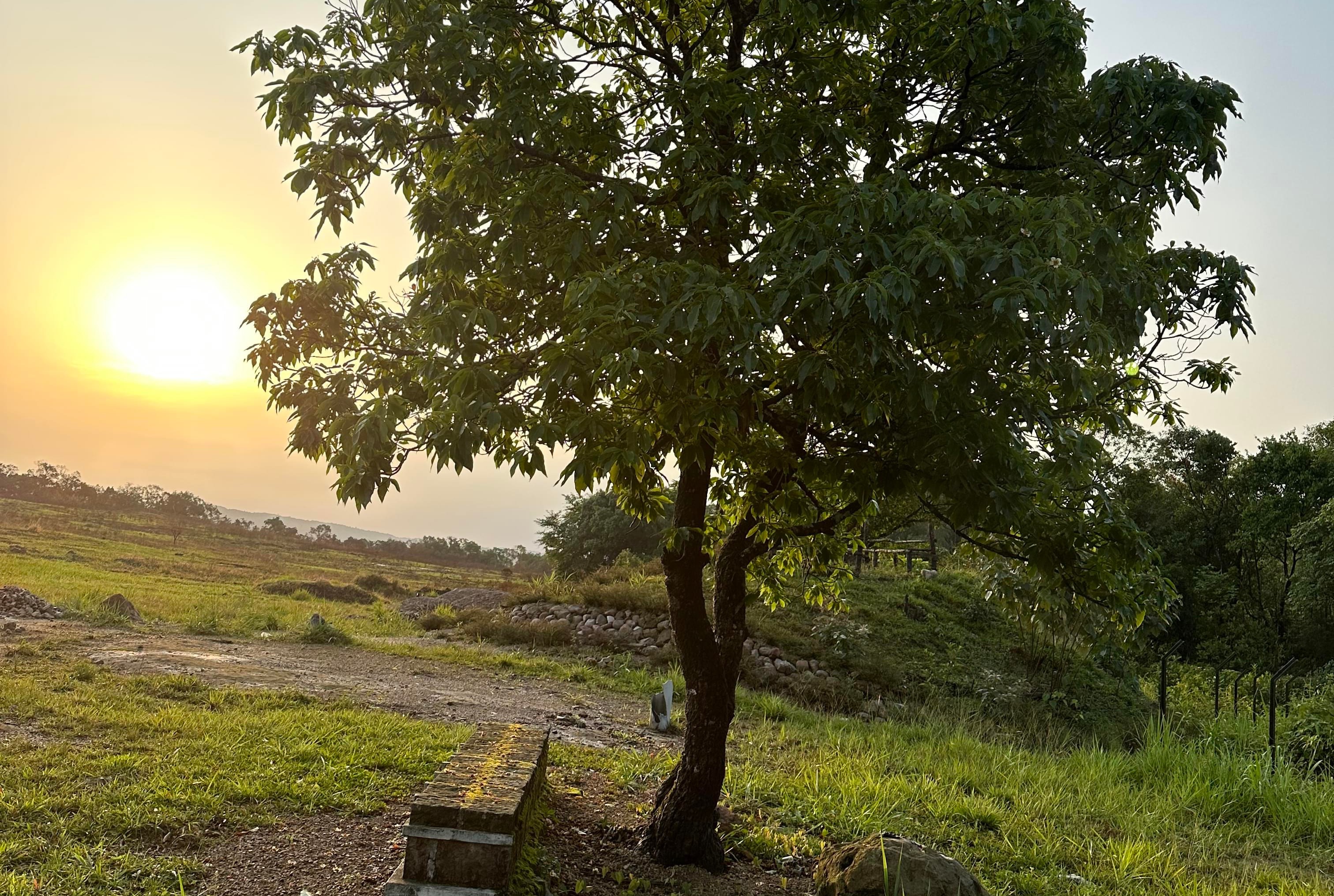
Later, I visited Mawlynnong, the cleanest village in Asia. Every house had a small garden, and there was not a single piece of litter in sight. It was a lesson in harmony - how people and nature could coexist beautifully.
Krang Suri and the Farewell to Meghalaya
On my final day, I visited Krang Suri Waterfalls. The hike to the falls was scenic, with sunlight filtering through the trees and casting playful shadows on the ground. And then, there it was - the waterfall of my dreams. The water cascaded down in sheets of blue and formed a natural pool at its base. Without hesitation, I stepped in.
The cold water sent shivers through my spine, but I did not care. I swam towards the falls and felt the force of the water pounding against my skin. It was the purest form of joy - raw, unfiltered, and exhilarating.
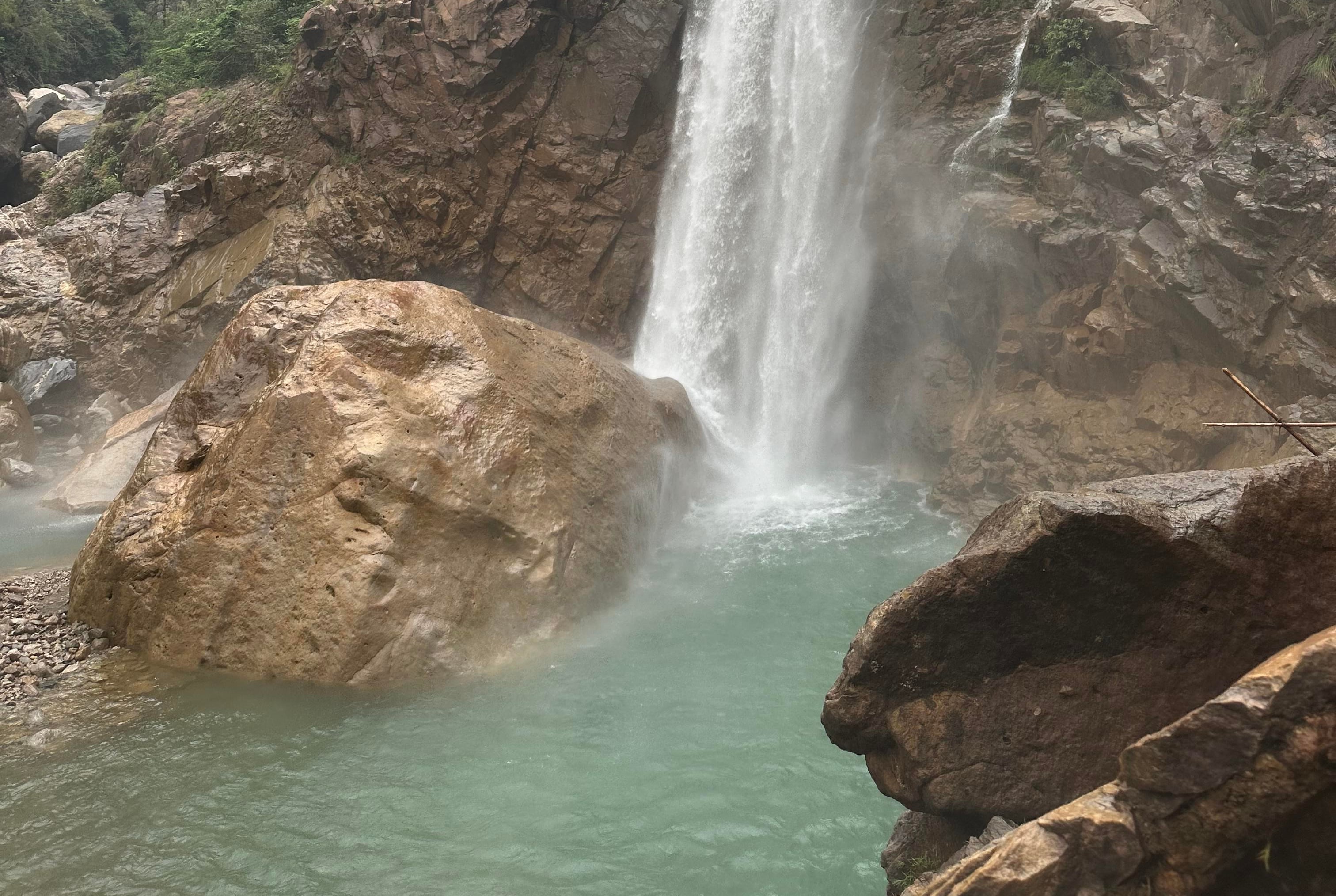
As I sat on a rock, drying off, I realised something. This trip changed me. I had come to Meghalaya seeking an escape, but I found something much more valuable - myself.
The next morning, as my car made its way back to Guwahati, I took one last look at the mist-covered hills. Meghalaya had given me stories, a newfound love for solitude, and an unbreakable bond with nature.
Read More: Thrillophilia Meghalaya Reviews